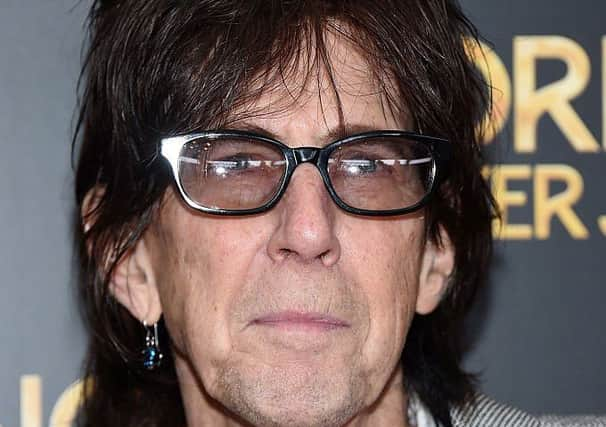Obituary: Rick Ocasek, singer, songwriter and musician who was one of the drivingforces behind The Cars


Ric Ocasek, The Cars frontman whose deadpan vocal delivery and lanky, sunglassed look defined a rock era with chart-topping hits like Just What I Needed, was found on dead Sunday afternoon in his apartment in New York’s Manhattan.
The New York Police Department said officers found the 75-year-old Ocasek at about 4pm after responding to a 911 call. They said there were no signs of foul play and that the medical examiner was to determine a cause of death.
Advertisement
Hide AdAdvertisement
Hide AdThe death comes a year after The Cars were inducted into the Rock & Roll Hall of Fame, followed by an announcement by model Paulina Porizkova on social media that she and Ocasek had separated after 28 years of marriage. The pair met while filming the music video for Drive, another Cars hit.
Ocasek, who sang, played guitar and wrote most of the band’s songs, and Benjamin Orr, who played bass and also sang, were ex-hippie buddies who formed The Cars in Boston in 1976. They were a decade older than many of their modern-rock compatriots but became one of the most essential American bands of the late 1970s and 1980s with their fusion of New Wave, 1960s pop and 1970s glam.
Ocasek’s minimalist, half-spoken deadpan vocals set made the band’s sound, and his long, lanky appearance formed their lasting image.
The first three songs on their 1978 self-titled first album were all hit singles and remain widely known classics: Good Times Roll, My Best Friend’s Girl and Just What I Needed.
They had ten other singles in the US Billboard top 40, and of their seven studio albums, four were in Billboard’s top 10.
The band’s commercial peak came with 1984’s Heartbeat City, which featured the hit singles You Might Think and Magic, sung by Ocasek, and the atypical ballad Drive, sung by Orr.
They were always an MTV favourite, and the whimsical, partly animated video for You Might Think, along with the mournful video for Drive, brought them near-constant airplay on the channel in the mid-1980s.
The band broke up in 1988, but their influence would be deeply felt in the 1990s and beyond. Kurt Cobain and Nirvana covered My Best Friend’s Girl at their last live show in 1994, and Ocasek produced albums for younger bands including Weezer, No Doubt and Bad Religion.
Advertisement
Hide AdAdvertisement
Hide AdThe group briefly reunited and released their seventh studio album in 2011.
They were inducted into the Rock & Roll Hall of Fame in 2018 after being nominated twice previously. During the ceremony, Ocasek paid tribute to Orr, who died in 2000 of pancreatic cancer.
“It’s quite strange to be here without him,” Ocasek said.
In announcing the separation last year, Porizkova said their family is “a well-built car.” But, she said, that “as a bicycle, my husband and I no longer pedal in unison”. Ocasek had six sons, two from each of his three marriages.
He grew up in Baltimore, and his family moved to Cleveland when he was a teenager. After graduating from high school he had stints at Antioch College and Bowling Green State University in the mid-1960s before dropping out to pursue music.
Ocasek met Orr in 1965 and they formed their own first band called ID Nirvana in 1968. In the 1970s they relocated to Boston and formed bands including the folk-rock Milkwood and also played as an acoustic duo before finding their calling when they created The Cars.
TOM HAYS & ANDREW DALTON